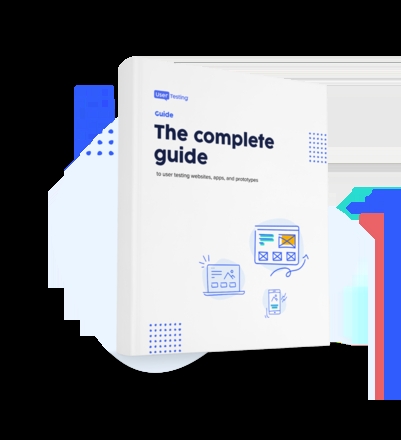
Improving the employee experience: how to build a usable internal web portal

Creating a user-friendly, time-saving and efficient internal portal isn’t for the faint of heart, but it’s a worthwhile step in the battle for employee retention. Here are some recommendations to building an intranet that employees actually find useful.
When we think about user experience, we usually think about customers. This is because web design is so closely entangled with marketing that it’s hard to separate designing sites from selling products.
Of course, optimizing the user experience isn’t just important for selling stuff.
Making the process of donating to a charity simple and intuitive will increase the amount of donations. "Imagineers" spend decades designing theme park ride queue systems so visitors don’t find the wait off-putting. And making the experience of working for a company pleasant will keep your staff from running off to other companies.
The new employee
In the past, employees would eagerly start their day with a new MacBook, downloading music to their cutting-edge iPhone for the commute. Once at the office, they would uncomplainingly log into an outdated PC running a decades-old version of Windows, using systems that only functioned in DOS.
That scenario has changed. New employees have entered the workplace questioning why they can't have a work iPhone, a MacBook, and compatible software. If these demands aren't met, they'll likely move on to a modern start-up that can accommodate their needs.
Today's new employees expect to find a single website on their first day that allows them to:
- Log their HR details
- Monitor their pay and holidays
- Stay informed about company news
- Book work-related travel
- Look up colleagues and view the organizational chart
- Access information on processes and get help
- Find contact details for relevant people
- Gain access to discounts and perks
- Share blogs and promote clubs and social events
This approach not only makes a fantastic first impression but also simplifies daily life for everyone.
Save staff, save time
Even if you don’t see the advantage in staff retention, there’s a genuine saving here in terms of time.
Automating processes so an employee can simply click and allow everything to sort itself will let them concentrate on their jobs and achieve far more.
The how
So how does one go about setting up a portal? Well, in essence, the same way one goes about any UX project: the first stage is user research.
This is both simpler and more complex than consumer research. On the one hand, your user base is at hand for you to interview and access in its entirety. They are also part of a community with their own culture and values, meaning there will be far more consistency in terms of their needs and priorities.
However, this situation has its own problems.
The management of any firm will insist it knows its employees better than you do, no matter how much research you have done. Breaking misinterpretations takes far longer than finding the truth from scratch, even without the interference of political agendas and troubled histories.
In addition, internal stakeholders will be looking for far more than just a simple profit; success with your portal will not just be determined by achievement, but also who gets the credit and how visible that success is to the right parties.
In both cases, diplomacy and brinkmanship are as important as your usual UX talents. This is where it can be extremely useful to gain sponsorship from someone senior in the company and partner up with an influential and charismatic liaison who can smooth the way for what you need to do and point out coming pitfalls in advance.
When engaging these people, make constant references to their personal devices and phones; ask why they’re willing to accept sub-standard experiences in the workplace when they don’t at home, and remind them of what’s at stake for their company in terms of losses and staff churn.
Choosing a platform
Choosing the right platform to host your site is crucial, as it involves balancing user experience, device compatibility, and security concerns. You need to consider not only the user experience but also the compatibility with the company's devices and systems, as well as security concerns. In such situations, the simplest choice is often the best. Opt for a flexible tool that works across various platforms and requires minimal investment.
Free options like WordPress are often just as effective as a custom package and they’re a lot easier to sell. Though, it will be worth championing these as a minimum viable product that can be invested in more heavily later on, as your stakeholders will often be hounded by slick salesmen trying to sell them flashy packages for a lot of money. They will often do nothing the free option won’t, but you’ll need to overcome the prejudice that free means bad.
Tell your client to make a free site for now to test engagement and learn lessons, then advise they can invest in an expensive package to wow senior management later on, once the concept has been proven. If you do your job right with the free version, the investment will likely never be needed, but this attitude should answer every objection and calm every fear.
With your platform chosen and stakeholder approval gained, you next need to involve the entire company in the process of creating your site and content. The more employees you can involve in the site’s construction, the less resistance you will feel along the way and the fewer pitfalls you’ll find later on.
Launch day
Lastly, when your launch day approaches, your biggest challenge will stand in your way. The portal can be as minimal and provisional as you need it to be, but it must work perfectly.
Launch day is effectively going all-in. With a consumer site or app, you will only engage a fraction of your user base on your first day and can label the product "beta" without lasting issues. Reputation still counts, but the value of your product can outweigh a few teething troubles.
The 2016 launch of the Pokemon Go mobile game was a disaster with a vast underestimation of the user uptake preventing many users from even accessing the game, but it still went on to be one of the most successful mobile games of all time.
This, however, is an anomaly. First impressions are often the only ones that count, so make sure it is good, even if it's a small one.
Overall, it is likely easier to launch a successful consumer project than to create an employee portal, but you can’t underestimate the value to a company of a tool to take care of all their everyday needs while they concentrate on succeeding and enjoying their work. It’s not for the faint hearted, but it is a worthwhile pursuit for a great employee experience.

Get started with experience research
Everything you need to know to effectively plan, conduct, and analyze remote experience research.





